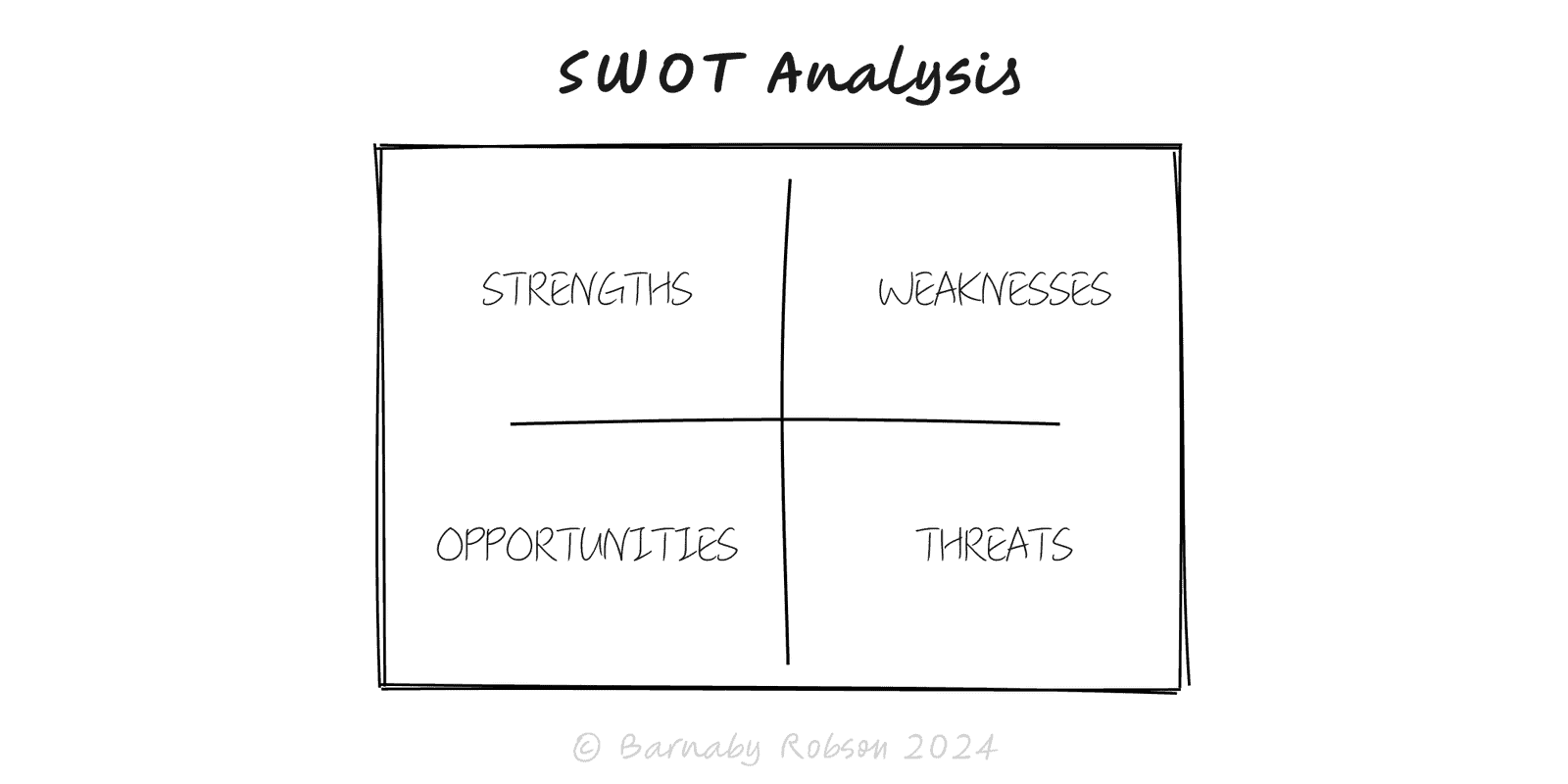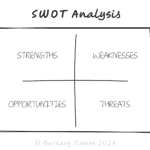SWOT Analysis
Albert Humphrey (popular attribution from 1960s–70s planning practice); later formalised with TOWS by Heinz Weihrich

SWOT is a simple lens to structure situational analysis. It separates what’s inside your control (capabilities, assets, constraints) from what’s outside (market shifts, regulation, tech, competition). The real value comes when you turn the four lists into actionable strategies (the TOWS step), not from generating a long catalogue of observations.
Two axes
- Internal: Strengths (advantages to leverage) and Weaknesses (gaps to fix or route around).
- External: Opportunities (favourable trends/events) and Threats (headwinds/risks).
SWOT synthesis – combine quadrants to create options:
- S–O: Use strengths to capture opportunities.
- W–O: Shore up weaknesses to pursue opportunities.
- S–T: Use strengths to counter threats.
- W–T: Reduce exposure; exit, insure, or partner.
Company and BU strategy;
Market entry;
Product/portfolio review;
Competitor and partner assessment;
Personal/career planning.
Define the objective & scope – what outcome and horizon is this SWOT for? (e.g., “UK SMB launch in 12 months”).
Populate each quadrant (evidence-first)
Strengths – proof in metrics/assets: unique data, low CAC, patents, distribution, culture.
Weaknesses – bottlenecks/constraints: capital, brand, churn, unit economics, missing capabilities.
Opportunities – external tailwinds: regulatory change, underserved segments, adjacent jobs, tech costs falling.
Threats – external headwinds: new entrants, platform risk, substitutes, compliance, macro shifts.
Prioritise – score each item by impact × certainty; keep the top 3–5 in each box.
Do TOWS pairing – write 1–2 concrete options per pairing (S–O, W–O, S–T, W–T).
Choose & test – pick 2–3 options; add owners, metrics, and a 90-day test plan.
Review cadence – refresh quarterly or when a major assumption changes.
Laundry lists – too many vague items; force evidence and cut to the vital few.
Mixing internal/external – keep “we can change” separate from “we must respond to”.
No synthesis – a SWOT without TOWS leaves you with description, not decisions.
Wishful thinking – treat items as hypotheses with sources; avoid platitudes (“great team”) without proof.
Static snapshot – trends move; set explicit review triggers.
One size fits all – run SWOT for a specific objective/market, not the whole world.
